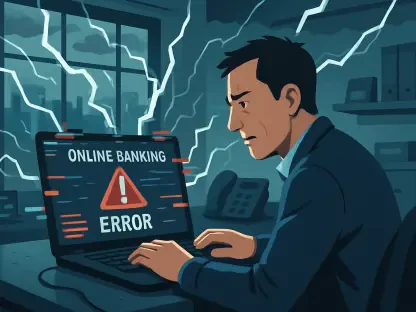Dive into the dynamic world of digital currencies with Priya Jaiswal, a luminary in Banking, Business, and Finance, whose profound insights into market analysis and international business trends have shaped the fintech landscape. With a career dedicated to unraveling the complexities of portfolio management and emerging financial technologies, Priya offers a unique perspective on the rapid evolution of stablecoins and blockchain-based payment systems. In this engaging conversation, we explore the surge of stablecoins and their potential pitfalls, the strategic launch of institutional deposit tokens, the critical need for unity in digital money, the challenges of interoperability in payment systems, and the transformative power of smart contracts in reducing financial errors.
What’s fueling the rush for so many companies and individuals to create their own stablecoins in today’s market?
The surge in stablecoin creation is largely driven by the promise of stability in a volatile crypto market. Unlike traditional cryptocurrencies, stablecoins are pegged to assets like the U.S. dollar, making them attractive for transactions, remittances, and as a store of value. Companies see them as a way to integrate blockchain technology into their ecosystems, offering faster, cheaper cross-border payments. Additionally, there’s a race to capture market share in the digital economy—everyone wants to be the go-to digital currency for their niche, whether it’s for payments, loyalty programs, or decentralized finance applications. However, this rush is also fueled by speculative interest and the potential for branding, which can sometimes overshadow the practical utility of these coins.
How do you think this proliferation of stablecoins might affect their core purpose as a form of digital money?
When you have a flood of stablecoins, each tied to different issuers or assets, you risk fragmenting their purpose as a universal medium of exchange. Instead of being a seamless form of digital money, they can start resembling isolated loyalty schemes—think airline miles or store credits. This creates confusion for users who might struggle to determine which stablecoin is accepted where, eroding trust and usability. Over time, if interoperability isn’t addressed, their value could become more tied to specific ecosystems rather than functioning as a broad, reliable currency, which undermines the whole concept of stability and accessibility.
You’ve likened stablecoins to loyalty points in some scenarios. Can you dive deeper into that analogy and highlight the risks you see?
Absolutely. The comparison to loyalty points comes from the idea that if every issuer has their own stablecoin, it’s like having a wallet full of different airline miles or coffee shop credits. You’d constantly be figuring out which one to use where, and many might not be interchangeable or widely accepted. The risk here is twofold: first, it creates a fragmented user experience that’s far from the simplicity of cash. Second, there’s a danger of devaluation—if a stablecoin is tied to a specific platform and that platform struggles, the coin’s perceived value could tank, much like unused loyalty points losing relevance. It’s a slippery slope to losing the trust that stablecoins are meant to inspire.
Turning to institutional efforts, can you share the vision behind launching deposit tokens for institutional clients, as opposed to public stablecoins?
The idea behind deposit tokens for institutional clients is to create a controlled, secure way to facilitate native digital payments on public blockchains while maintaining the rigor of traditional banking. These tokens are designed for large-scale, high-value transactions between trusted entities, offering near-instant settlement and reducing counterparty risk. Unlike public stablecoins, which are accessible to anyone and often subject to market fluctuations or regulatory scrutiny, deposit tokens are tailored for institutional needs, ensuring compliance with banking standards and providing a direct link to the issuing bank’s balance sheet. It’s about bridging blockchain efficiency with the reliability of regulated finance.
How do these institutional tokens differ from widely available stablecoins, and what’s the rationale for limiting access to them?
Institutional tokens differ primarily in their scope and backing. They’re often directly tied to a bank’s deposits, representing a claim on actual funds held by the institution, whereas public stablecoins might be backed by a mix of assets or reserves that can vary in transparency. The restricted access is deliberate—it’s about risk management and regulatory compliance. Institutions operate under strict guidelines, and limiting these tokens to vetted clients ensures that transactions occur within a trusted network, minimizing exposure to fraud or misuse. It also allows banks to maintain control over the token’s lifecycle, from issuance to redemption, which isn’t feasible with a public-facing stablecoin.
Can you explain the concept of ‘singleness of money’ and why it matters for digital currencies issued by major financial institutions?
‘Singleness of money’ refers to the idea that money, regardless of where it’s held or who issues it, should function as a unified, interchangeable asset. In traditional finance, the Federal Reserve ensures this by backing dollars across all banks, so a dollar at one bank is worth the same as a dollar at another. For digital currencies, especially those issued by major banks, maintaining this unity is crucial to avoid fragmentation. Without it, you’d have a situation where digital tokens from different banks aren’t directly transferable or hold different values, which would confuse users and destabilize the system. It’s about preserving trust and ensuring that digital money remains as reliable as cash.
What challenges do you foresee in creating a unified structure for digital currencies similar to what exists for traditional dollars?
The biggest challenge is interoperability—getting different banks’ digital systems to recognize and accept each other’s tokens seamlessly. Unlike traditional dollars, where the Fed acts as the central authority, digital currencies operate on diverse blockchain platforms with varying protocols. There’s also the issue of regulatory alignment; different jurisdictions have different rules, which complicates cross-border acceptance. Another hurdle is trust—banks need to agree on shared standards for issuance and redemption, which requires unprecedented collaboration. Without a central overseer or standardized framework, achieving that singleness in the digital realm is a steep climb.
How might the differences in digital currencies across banks impact the user experience for clients making payments?
Differences in digital currencies can create a clunky user experience. If each bank’s token operates on a unique system or isn’t directly compatible with others, clients could face delays or additional steps to convert or transfer funds. Imagine trying to pay a vendor who banks elsewhere, only to find your digital token isn’t accepted, forcing a conversion back to traditional currency. It adds friction to what should be a seamless process. For businesses, especially those dealing with multiple partners, this could mean higher costs and slower transactions, defeating the purpose of digital innovation in payments.
What do you believe needs to happen to streamline digital transactions across various banking systems?
Streamlining digital transactions requires a few key steps. First, there needs to be a push for standardized protocols across blockchains, so tokens can interact without needing constant conversion. Second, banks and regulators should collaborate on a shared framework for digital currency issuance and redemption, ensuring consistency in value and trust. Third, investing in middleware or bridge technologies that facilitate interoperability between systems can help smooth out the technical kinks. Ultimately, the goal should be a system where the backend complexity is invisible to the user, allowing payments to flow as easily as swiping a card.
Looking at the role of technology, how do you see smart contracts contributing to error prevention in digital financial systems?
Smart contracts have immense potential to reduce errors in digital finance by automating processes with predefined rules. For instance, they can be programmed to verify an institution’s reserves before issuing a coin or executing a payment, preventing mishaps like over-issuance. This kind of built-in validation acts as a safety net, catching human errors—often called ‘fat-finger mistakes’—before they spiral into major issues. Beyond error prevention, smart contracts also enhance transparency and efficiency, as transactions are executed only when conditions are met, reducing the need for manual oversight and cutting down on operational risks.
What’s your forecast for the future of stablecoins and digital payment systems over the next decade?
I believe the next decade will be a defining period for stablecoins and digital payments. We’re likely to see a consolidation phase where the market weeds out less viable stablecoins, and a few dominant players emerge, possibly backed by major financial institutions or central banks with digital currencies of their own. Interoperability will become a priority, with more focus on creating unified standards to ensure seamless transactions across platforms. I also expect regulatory frameworks to mature, providing clearer guidelines that balance innovation with consumer protection. Ultimately, digital payment systems will become more integrated into everyday life, potentially replacing much of traditional cash and card usage, but only if trust and usability are prioritized.









